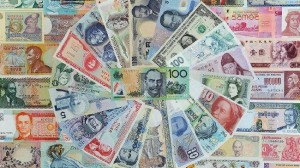 Australian dollar slid against its US counterpart on Monday before Reserve Bank of Australias deputy governor Philip Lowe takes a statement in Sydney on Tuesday, as speculation mounted that the central bank will consider an intervention in order to ease the strength of the national currency.
Australian dollar slid against its US counterpart on Monday before Reserve Bank of Australias deputy governor Philip Lowe takes a statement in Sydney on Tuesday, as speculation mounted that the central bank will consider an intervention in order to ease the strength of the national currency.
AUD/USD fell to a daily low at 0.9122 at 6:34 GMT, also the pairs lowest point since September 6th, after which consolidation followed at 0.9132, losing 0.42% for the day. Support was likely to be found at September 6th low, 0.9117, while resistance was to be met at psychological level of 0.9200.
Australian dollar continued its decline against the greenback from last week, after Reserve Bank of Australia (RBA) Governor Glenn Stevens said that the central bank will not close the opportunity for an intervention on the currency market, in case it assesses such a move as effective and providing a boost to major economic indicators. These comments hinted that the RBA may probably consider an intervention in order to reduce the value of the Aussie.
“Overall, in this episode so far, the bank has not been convinced that large-scale intervention clearly passed the test of effectiveness versus cost. But that doesn’t mean we will always eschew intervention. In fact we remain open-minded on the issue,” Glenn Stevens said.
“The RBA’s stance of containing currency strength is very clear, so some caution is needed” against remarks from RBA speakers, said Kengo Suzuki, chief currency strategist at Mizuho Securities Co. in Tokyo, cited by Bloomberg News.
The yield on Australian 10-year government bonds decreased four basis points to 4.28% today, after climbing to 4.35% at the end of last week, or the highest level since November 2011.
In addition, Reserve Bank of Australias deputy governor Philip Lowe is scheduled to take a statement at a conference in Sydney tomorrow.
Meanwhile, the greenback received a certain support at the end of last week, after the Department of Labor said that the number of people who filed for unemployment assistance in the United States decreased by 21 000 to reach 323 000 during the week ending on November 16th 2013, or the lowest number since September.
Also, Markit Economics reported on November 21st, that the index, gauging manufacturing activity in the United States, rose to a reading of 54.3 in November, according to preliminary data, which marked an eight-month high. The final value of the manufacturing PMI came in at 51.8 in late October. Values above the key level of 50.0 are indicative for expansion in activity.
Later in the day the National Association of Realtors (NAR) will release a report on pending home sales in the United States, an indicator for the future housing market activity. The median estimate of experts pointed a 2.0% gain in October compared to a month ago, after in September sales declined 5.6%. Better than projected results will certainly provide support to greenbacks demand.
Elsewhere, the Aussie plunged to lows unseen since October 2008 against the kiwi dollar. AUD/NZD cross lost 0.46% on a daily basis to trade at 1.1143 at 7:49 GMT, after touching 1.1137, a five year low. The Reserve Bank of New Zealand (RBNZ) may begin raising its benchmark interest rate from the current record low level of 2.50% by June next year, according to economist projections. The pair might plunge even further, as the prospects of a rate hike become more evident.
EUR/AUD pair was gaining 0.32% for the day to trade at 1.4833 at 7:57 GMT.





